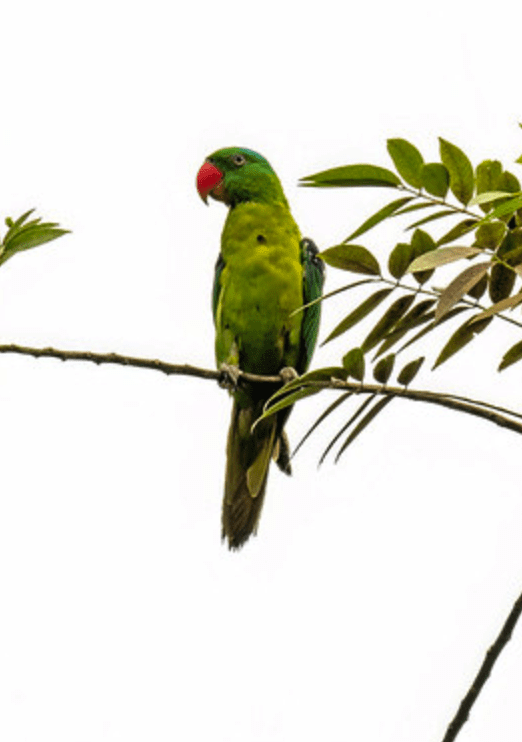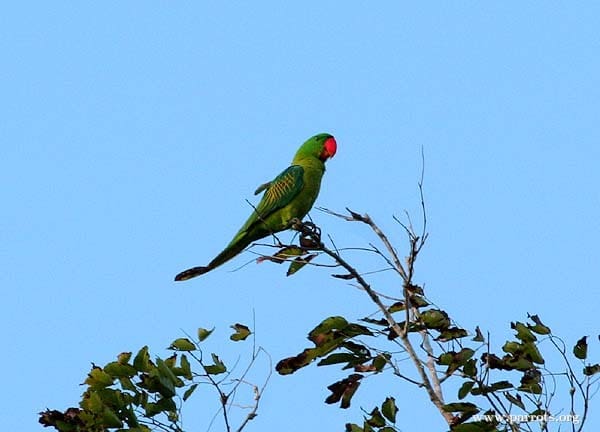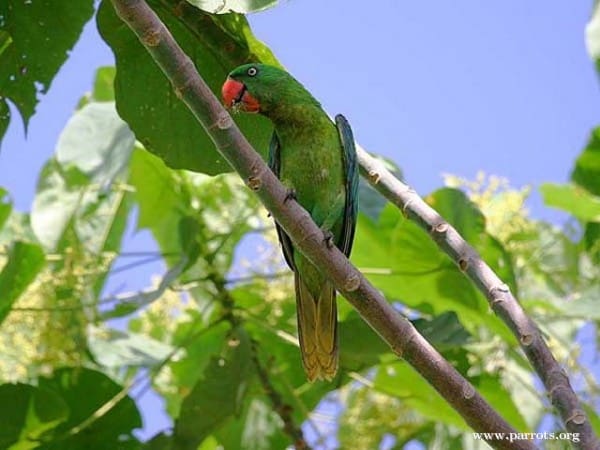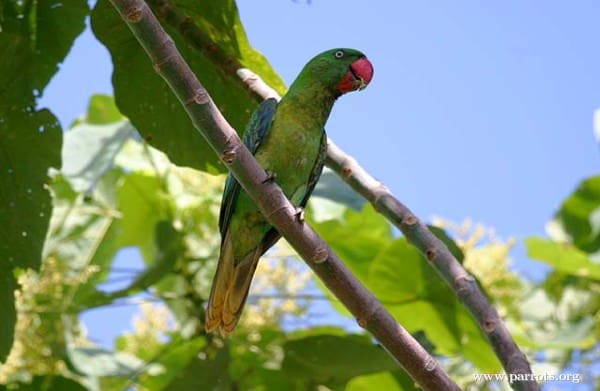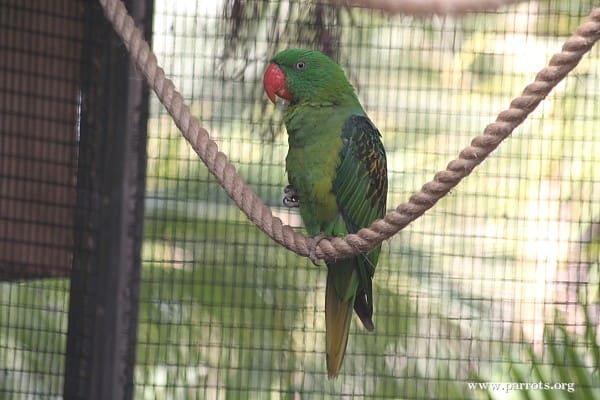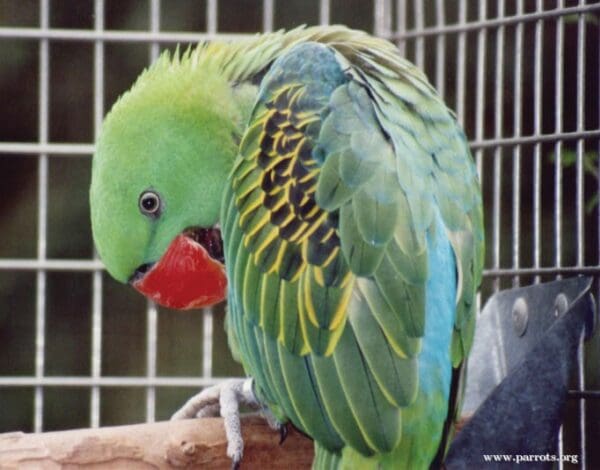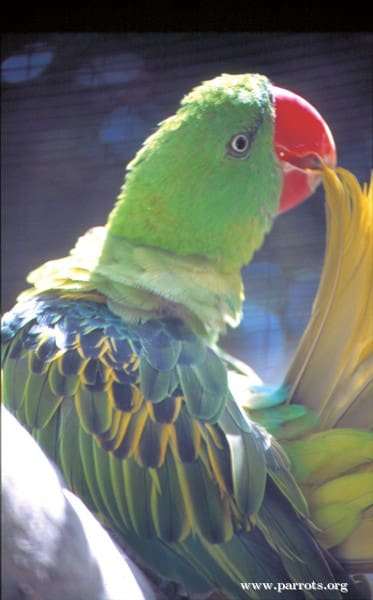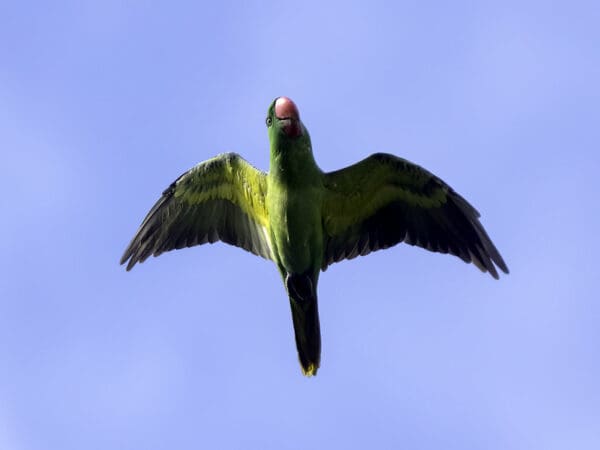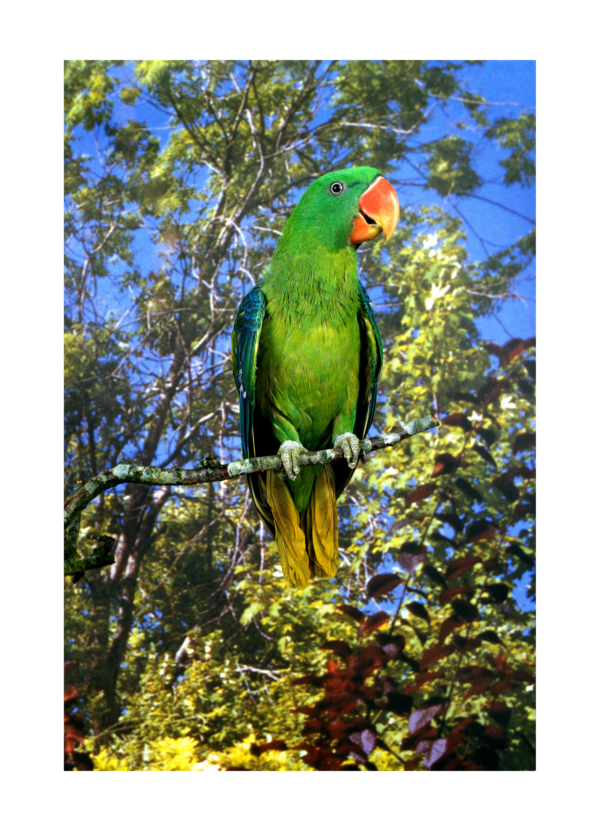Great-billed Parrot
Also known as:
Moluccan Parrot, Island Parrot, Large-billed Parrot
Also known as:
Moluccan Parrot, Island Parrot, Large-billed Parrot
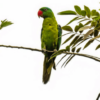
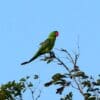
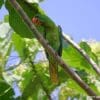
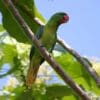
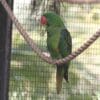
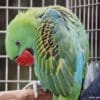
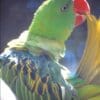
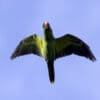
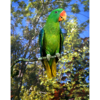
DID YOU KNOW?
The Great-billed Parrot prefers small islands and will travel widely between them.

Tanygnathus

megalorynchos
Size:
41 cm (16 in)
Weight:
260 g (9.1 oz)
Subspecies including nominate:
eight: T.m. megalorynchos, T.m. affinis, T.m. subaffinis, T.m. hellmayri, T.m. viridipennis, T.m. sumbensis, T.m. floris, T.m. djampeae
Colour Adult:
T.m.megalorynchos: Both adults mid to large sized green parrots with pale blue edging on mantle; pale blue back and rump; black scapulars and lesser wing coverts, margined with blue and green; black middle wing coverts margined with yellow. Red beak. White eye.
T.m. affinis: Both adults have duller green on heads, with brighter green on hindneck; green scapulars; bend of wing blue.
T.m. subaffinis: Both adults as in affinis but marginal blue on mantle; green rump with blue tinge.
T.m. hellmayri: Both adults as in affinis, but blue on mantle absent; green on bend of wing.
T.m. viridipennis: Both adults as in megalorynchos, but blue on primary feathers and coverts absent.
T.m. sumbensis: Both adults as in megalorynchos, but darker blue on rump.
T.m. floris: Both adults as in sumbensis but lighter green on crown and occiput; less blue on back and wings.
T.m. djampeae: Both adults as in floris but paler blue on rump.
Colour Juvenile:
As in adults but shoulders and lesser wing-coverts green.
Call:
Harsh notes given in flight or while perching; also series of one-note squawks at regular times.
More Information:
Content Sources:
CITES
BirdLife International
Cornell Lab of Ornithology/Birds of the World
Parrots: A Guide to Parrots of the World, Juniper and Parr, 1998
Parrots of the World, Forshaw and Cooper, 1989. 2010 edition
Parrots of the World, Forshaw, 2006.
Parrots in Aviculture, Low, 1992.
Psittacine Aviculture, Schubot, Clubb and Clubb, 1992.
Captive Status:
Rarely seen in aviculture.
Longevity:
—
Housing:
Walk-in aviary or enclosure, minimum length 4.5 m (14.7 ft).
Diet:
Mix of small seeds: canary, oats, safflower; spray millet; limited sunflower seed, dry, soaked or sprouted; sprouted mung or other beans, cooked butterbeans or lentils; boiled corn; fresh green leaves such as: Swiss chard, lettuce, sowthistle, dandelion, chickweed; fresh vegetables including carrot, celery, squash or zucchini, green beans, peas in the pod; fresh fruit including apple, pear, orange, cactus fruits and bananas; complete pellet, nuts such as walnuts or hazelnuts; complete pellet.
Enrichment:
Provide overhead misters or shallow water bowls for bathing, parrot play gyms, large parrot toys and safe chewables (fir, pine, sterilised pine cones).
Nest Box Size:
16″x 16″ x 24″ (40.6 cm x 40.6 cm x 61 cm) box or 12″ x 12″ x 36″ (30.5 cm x 30.5 cm x 91.5 cm) vertical box.
Clutch Size:
2
Fledging Age:
9 weeks
Hatch Weight:
—
Peak Weight:
—
Weaning Weight:
—
World Population:
Unknown, decreasing.
IUCN Red List Status:
Least Concern
CITES Listing:
Appendix II
Threat Summary:
Not globally threatened. Wild population numbers are stable on most islands in its range, but on Sumba subspecies sumbensis is endangered at 1700 birds. Subspecies floris has suffered a marked decline from trapping for trade. Habitat destruction is an issue – the species is considered to have a medium dependency on forest habitat and tree cover is estimated to have declined by 6.5% within its range over the past three generations. Therefore it is tentatively suspected that this may have led to a 1-19% decline in population size over the same period.
Range:
T.m. megalorynchos: Talaud and Sangihe Islands to small islands off western coast of Vogelkop Peninsula, West Papua; introduced to S Philippines.
T.m. affinis: S Moluccas.
T.m. subaffinis: Tanimbar Islands, and Babar Island.
T.m. hellmayri: SW Timor, Semau and Roti Islands.
T.m. viridipennis: Kalaotoa and Madu Islands, south of Sulawesi.
T.m. sumbensis: Sumba, Lesser Sunda Islands.
T.m. floris: Flores, Lesser Sunda Islands.
T.m. djampeae: Tanahjampea and Kalao Islands, south of Sulawesi.
Habitat:
Found in coastal lowlands and adjacent foothills; occurs in primary and tall secondary forest, forest edges, closed woodlands and mangrove; will also visit coconut plantations. Up to 1000 m (3280 ft).
Wild Diet:
Diet includes the fruit of Sonneratia alba, Canarium vulgare and casuarinas. Reported to visit corn crops.
Ecology and Behaviour:
Will congregate in groups of up to a dozen birds while feeding; call loudly while in flight. Communal roosting.
Clutch and Egg Size:
2 broadly elliptical eggs, 39.0 x 28.5 mm (1.5 x 1.1 in).
Breeding Season:
August-December. Nest is cavity in tall deciduous tree.
Related Links:
—
